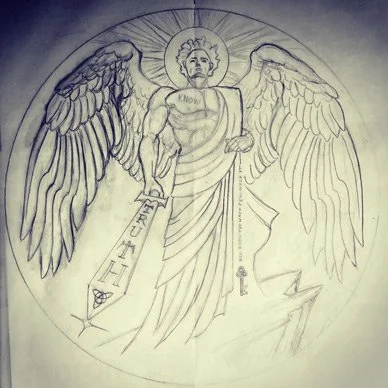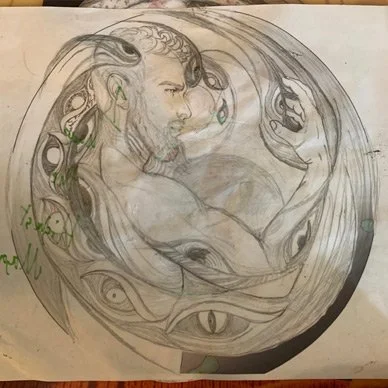
silver coin
production process
A Story of Inspiration, Design, and Passion
The complex procedures necessary to produce one silver coin (or silver round) are a testimony to man’s desire for transportable, fungible, standardized, and beautiful coinage for trade.
The first step in this undertaking is Chris’ artistic inspiration. Many people have tried to duplicate his formula for success in the silver round manufacturing market, but they have all failed because they lack his artistic genius, productivity level, and continuous creativity.
Chris begins the design process with an inspiration. These can be related to any one of the varied themes that he has initiated over the years. A few examples are - the WW Meme series, the 1776 series, and the US Presidential series. He then creates drawings, sketches, and/or computer images to reflect the concepts he wants featured on his next coin (actually a “round”).
These images are then sent to his colleague, who is a commercial artist. Interestingly, Chris’ drawings were at one time converted into clay models.
The Minting Process
Today, rather than clay, the Silver Shield production image files are created on computer. They are then forwarded to the Golden State Mint by the commercial artist, where the mint’s computers reduce the image to round (coin) size. The reverse punching steel dies of the image are then fabricated.
There is one die for the front, or head, of the coin, which is called the Obverse side. And there is another die created for the back, or tails, of the coin. This side is called the Reverse. The edges can be plain or have reeding, which most people are familiar with, or lettering. The rim is the name for the raised outer edge area.
At one time, these steel dies were produced by a very skilled hand process, and the men were called die-cutters. Today, computers have replaced these talented men.
An example of one of the presses used to impress the planchets.
Once the steel dies are produced, they are used in a minting press to stamp, or punch, the silver coin planchet (blank), impressing the image into both sides of the coins simultaneously.
The coin minting presses use between 35 and 100 metric tons of pressure to strike the rounds. The collar placed around the planchet restricts the flow of the metal and creates the rim. As many as 750 coins or rounds can be produced per minute.
The presses are set up to manufacture whatever size, material, grade, or weight of the coin or round desired.
“Proof” coins or rounds are struck more than once for amazing detail from this new, highly-polished die on a polished planchet.
As a result, once the “proof” rounds are created, the Golden State Mint packages each .999 fine silver round in an airtight (air-tite) case; includes an individual, numbered, beautifully designed COA for each round; places them in classy, cushioned, individual boxes, and then ships them to the happy customer.
Although Chris’ proof rounds are available for purchase for one week ONLY, the entire detail-oriented process of this limited MiniMintage can take time before the customer receives their beautiful rounds. As you can see, they are well worth the short wait.
“SILVER COINS” VS
“SILVER ROUNDS”
On this site, we use both terms occasionally, as many new or novice collectors search the internet for “silver coins”. But an important distinction to understand is the difference between these terms. Silver Shield exclusively designs and produces beautiful silver rounds. Silver rounds and silver coins both contain a specific weight and purity of silver, but they differ in certain aspects. Silver rounds are typically produced by private mints and do not hold any face value or currency status. Rounds often feature unique designs, are sought after by collectors and investors for their artistic craftsmanship, and can hold additional value based on limited mintage numbers or exclusivity. On the other hand, silver coins are government-issued and carry a legal tender value in addition to their intrinsic silver value. Examples include the American Silver Eagle or Canadian Silver Maple Leaf. While both silver rounds and silver coins hold value based on their silver content, the distinction lies in their origin, design, and purpose.










